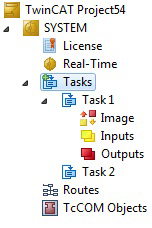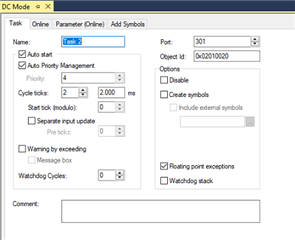Tool/software:
Hi Experts,
Customer is working with TI f28p65x launchpad and using ethercat communication with Beckhoff c603. The example for f28p65x_cpu1_dc_eepromemu_echoback is working:
Question is how can I make my own PDO definitions? In the example, the -> ethercat_subdevice_ssc_and_demo_setup.exe is given which created -> f28p65x_ssc_config.xml which is imported in the SSC tool to create the F28P65x CPU1 EtherCAT SubDevice.xml and C files.
Should I manually edit the f28p65x_ssc_config.xml and then import in the SSC tool (or) is there another way?
About this post from E2E:
As I understand the thread, I have to load the xml config in SSC tool and create a new excel sheet with my definitions and generate the files. Is this the right workflow? Additionally, how can I change the Distribution Clock Frequency?
Do I need to set it in the launchpad or the master Beckhoff PC?
Thank you.
Regards,
Archie A.




